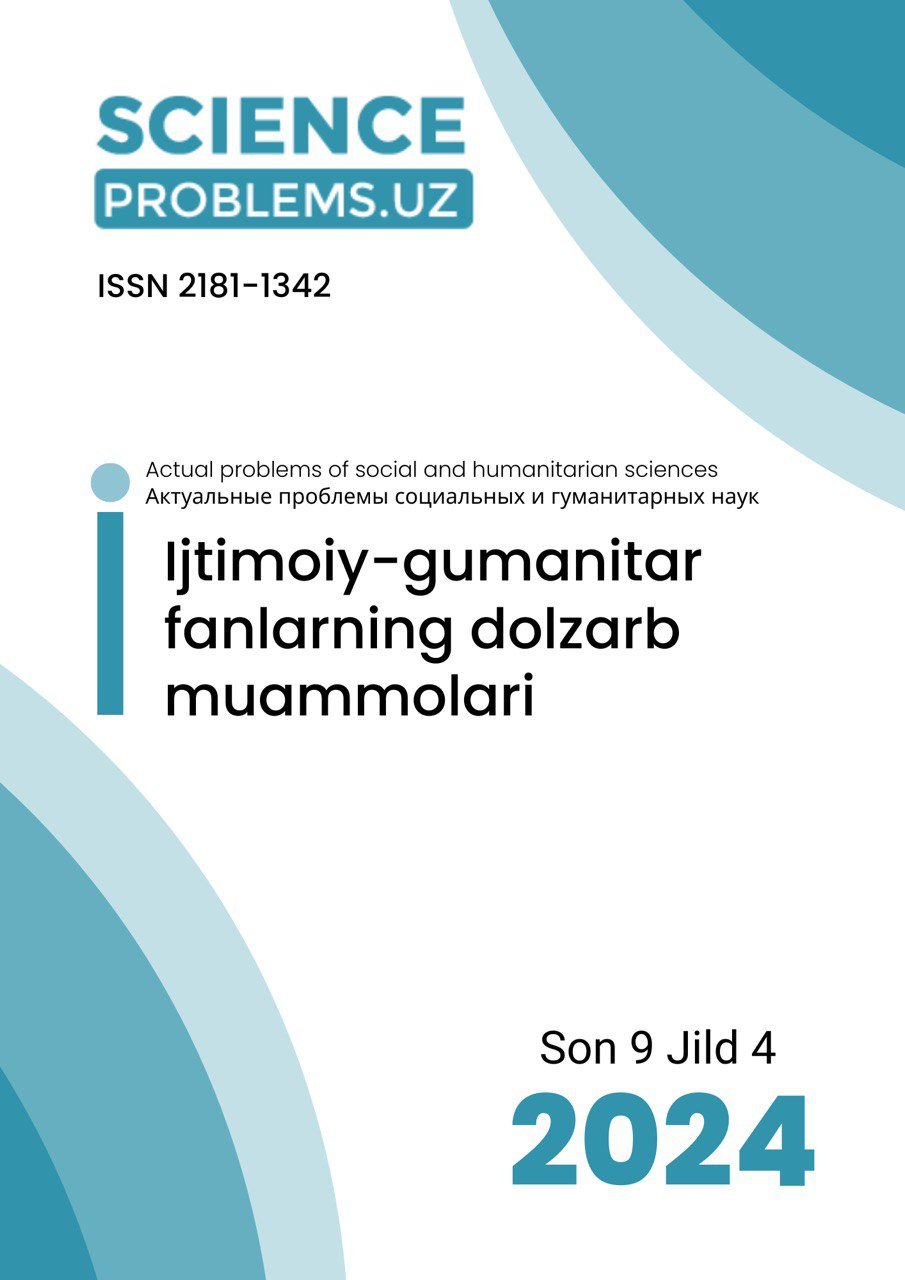REPRESENTATION OF THE CONCEPT OF “PATIENCE” IN SPECIAL ENGLISH DICTIONARIES
DOI:
https://doi.org/10.47390/SPR1342V4I9Y2024N32Keywords:
patience, translation, linguistics, Arabic, English, vocabulary, spirituality, resilience, linguistics, conceptual analysis.Abstract
This article examines the English equivalents of the Arabic concept of patience and their linguistic interpretations. The article explores the problems of translating the meaning of the word “Sabr – patience” into English and analyzes how it is rendered in different dictionaries. Based on the opinions of linguists and translation experts, it is argued that the translated equivalents of “Sabr” - for example, “patience”, “endurance”, “fortitude” - often do not fully reflect its meaning in Arabic. The article explores the deep spiritual and cultural aspects of “patience”, and provides specific examples of this concept and their linguistic analysis.
References
1. Al-Attas, S. M. N. The Meaning and Experience of Patience in Islam. Kuala Lumpur: International Institute of Islamic Thought and Civilization (ISTAC). 1993. – pp. 45-78.
2. Babushkin, A.P. Translation of realia in the light of cognitive semantics problems. In: Babushkin A.P., & Zhukova M.G. (eds.), Problems of text cultural adaptation. Voronezh. 1999. - pp.11-13.
3. Bell, R. T. Translation and Translating: Theory and Practice. London: Longman. 1991. – pp. 45-65.
4. Larson, M. L. Meaning-Based Translation: A Guide to Cross-Language Equivalence. Lanham, MD: University Press of America. 1984. – pp. 88-115.
5. Larsson, G. Dictionary of Language and Linguistics. Edinburgh: Edinburgh University Press. 2001.
6. Neroznak, V.P. From a concept to a word: to the problem philological conceptualism. In: Questions of philology and methods of teaching foreign languages. – Omsk. 1998. – pp. 80-85.
7. Nida, E. A. Context in Language and Translation. Amsterdam: John Benjamins Publishing Company. 2003. – pp. 35-65.
8. Oxford English Dictionary (OED). Definition of Patience. 2020.
9. Palmer, F.R. Semantics. Cambridge: Cambridge University Press. 1981. – pp. 175-205.
10. Raupova L, Khursanov N, Khursanova L, Polatova S. Development of world modern linguistics and discourse interpretation in it. InE3S Web of Conferences 2023 (Vol. 413, p. 03023). EDP Sciences.
11. Retsker, Y. I. Theory of Translation. Moscow: Vysshaya Shkola. 1988. – pp. 120-155.
12. Хурсанов Н.И. Философские взгляды на концепцию семи в узбекской и английской литературе ХХ века // Материалы Республиканской научной конференции на тему «Восточный Ренессанс: Теоретическое и практическое значение истории, образования и просвещения». 2024, С. 70-75.
13. Khairullina, D. Concept vs Notion and Lexical Meaning: What is the Difference? Journal of History Culture and Art Research, 7(5), 2018. – pp. 303-313.
14. Jackendoff, Ray. "Conceptual semantics and cognitive linguistics.": 1996. – pp. 93-129.
15. Lakoff, G. Women, Fire, and Dangerous Things. Chicago: University of Chicago Press. 1987a.
16. Lakoff, George, and Mark Johnson. "Metaphors We Live By, he University of Chicago Press." Chicago, IL 1980.
17. Mamatov A.E. Zamonaviy lingvistika. –Toshkent: Noshir, 2019. – B. 160.
18. Safarov Sh. Kognitiv tilshunoslik. – Jizzax: Sangzor, 2006.– B. 25-46.
19. Arutyunova, N. D. (1991). In Logical Analysis of Language. Cultural Concepts. Moscow: Nauka. 1991. - pp. 21-31.
20. Maslova, V. A. Cognitive Linguistics, in Russian. Minsk: Tetra Systems. 2004. – p. 26.
21. Raupova L.R. Dialogik diskursdagi polipredikativ birliklarning sosiopragmatik tadqiqi: Filol. fan. d-ri...diss. – Toshkent, 2012. – 220 b.
22. Xursanov N.I. Dramatik diskursda verbal va noverbal komponentlar munosabati (o‘zbek va ingliz tillaridagi asarlar misolada). Diss. Fil. fan. fal. dok. – Andijon. 2022. 148 b








